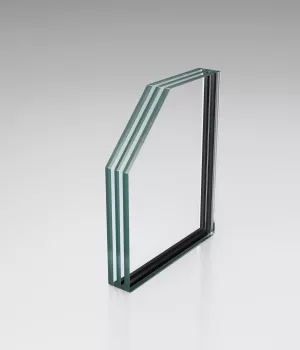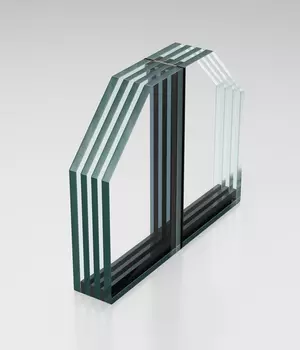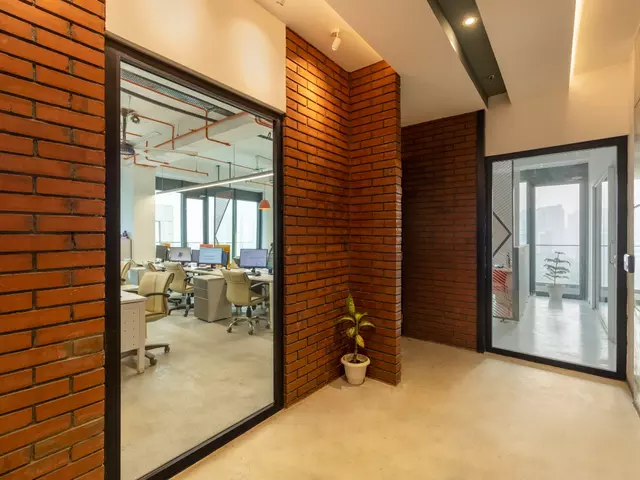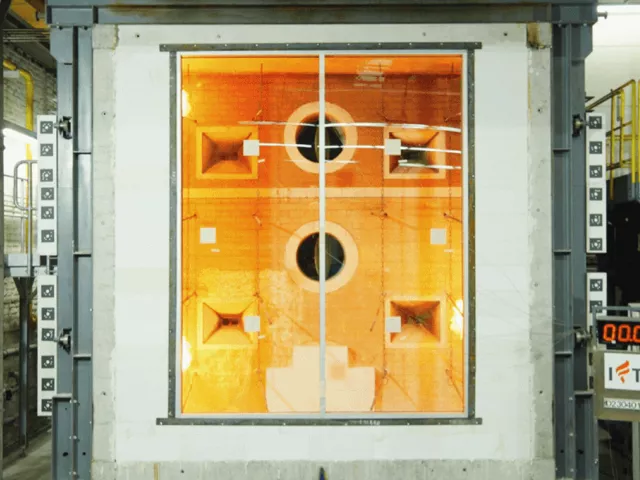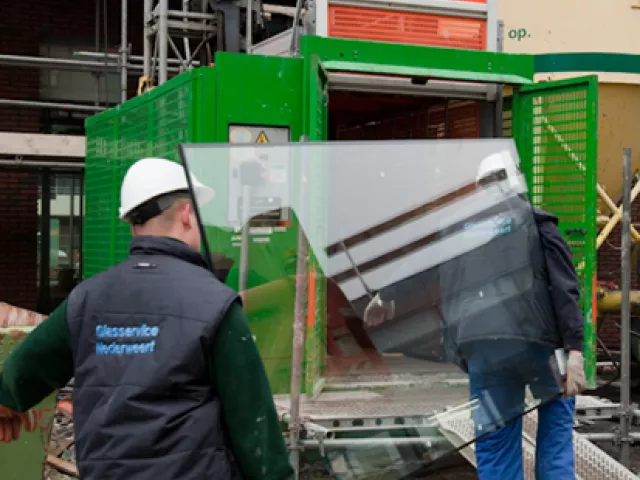Integrity & Insulation glass: Class EI
Blocks the transfer of heat while stopping flames, smoke, hot and toxic gases.
About EI Rating
Class EI (Integrity & Insulation) is the highest-rated classification for fire compartmentalisation, providing maximum protection for both people and property during a fire. In addition to assessing the integrity of the material, it measures how effectively the construction product, such as fire-resistant glass, limits the transfer of heat from the exposed side to the unexposed side. This ensures that neither the unexposed surface nor any nearby materials will ignite. Class EI glass also offers a significant heat barrier, protecting people nearby.
Class EI (Integrity & Insulation) glass is classified under the European standard EN 13501-2, designed to block the transfer of heat for a specified time period to prevent fire spread. The classification period is declared in minutes (30, 60, 90, etc.). A Class EI fire-rated glass with a 30-minute classification period will be denoted as EI30. Fire-rated systems undergo testing as per EN 1364-1 (for partitions) and EN 1634-1 (for openable windows and doors).
Performance Criteria for EI = Integrity + Radiation Control + Insulation Rating:
- No sustained flames on the unexposed side of the glass
- No openings exceeding Ø 25 mm or 6 x 150 mm
- No ignition of cotton insulation
- No temperature increase on the unexposed side exceeding an average of 140°C or a maximum of 180°C
What is the testing and classification standard for Integrity Insulation Class EI?
Class EI glass is tested according to the European standard EN 1363-1&2, EN 1364-1, EN 1634-1 and classified in accordance with EN 13501-2, which specifies the fire-resistant glass criteria for performance.
Can glass of Integrity Insulation Class EI be customised for specific applications?
Yes, Class EI fire-rated glass can be customised to fit specific requirements, such as size, shape, and additional features like laminated or insulated glazing for exterior use.
How does EI rated glass meet the requirements of international fire standards?
Class EI glass complies with international fire standards such as the European EN 13501-2, ensuring it meets the highest levels of fire protection glass by preventing the spread of flames and reducing heat transfer during a fire.
What is the maximum size for EI rated glass?
The maximum size for Insulation & Integrity glass Class EI depends on the specific product and application, with custom solutions available for larger installations such as facades and curtain walls.
Can fire rated glass of EI classification be used in outdoor applications?
Yes, Class EI glass can be used for outdoor applications, provided it is manufactured with additional features like laminated or insulated glazing to meet the requirements of external installations.
How does EI classified fire rated glass meet the requirements of local building codes?
Class EI glass complies with local building codes that require fire-rated glass to provide both integrity and insulation, ensuring it prevents fire spread and reduces heat transfer to protect occupants and property.
Related Classification
EW classification
Class EW (Integrity & Radiation) fire-rated glass reduces the transmission of radiant heat, limiting fire spread and creating safer separation distances.
E classification
Class E (Integrity only) fire-resistant glass acts as a barrier to prevent flames, smoke, and toxic gases from passing through.
